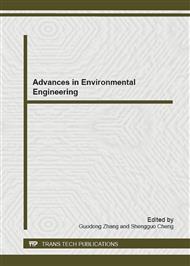p.547
p.551
p.556
p.560
p.566
p.570
p.574
p.578
p.582
The Comparison of Three Recycling Processes of Copper Chromite Spent Catalysts
Abstract:
Three technologies of recycling copper chromite spent catalysts from furfuryl production by furfural hydrogenization were developed. After the organic species was removed from the solid waste by vacuum pressure distillation at 130°C, the resultant solid waste catalyst was mixed with soda ash, followed by roasting, leaching and removing silicon in a reverberating furnace to obtain sodium chromate. Dissolving the cupric oxide in soda ash solution to remove chrome and then dissolving it in nitric acid, cupric nitrate can be obtained. A certain proportion of such sodium chromate and cupric nitrate were mixed and treated by ammonia solution to give precipitate, which was roasted and granulated to get new catalyst used in furfuryl production. Three processes features and their respective advantages and disadvantages were discussed.
Info:
Periodical:
Pages:
566-569
Citation:
Online since:
November 2012
Authors:
Price:
Сopyright:
© 2012 Trans Tech Publications Ltd. All Rights Reserved
Share:
Citation:


